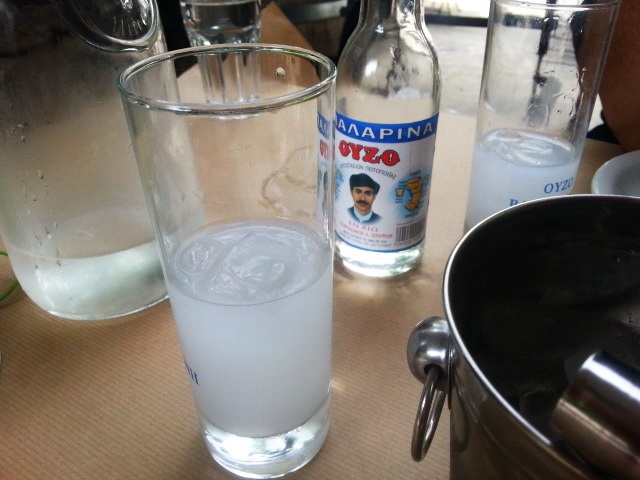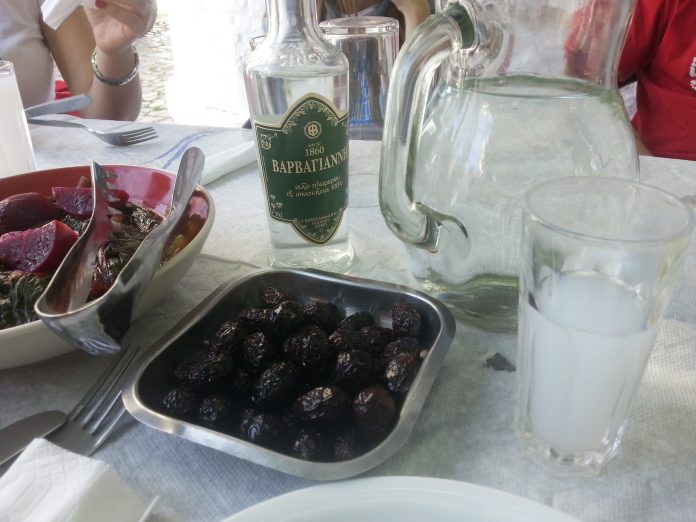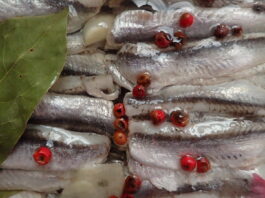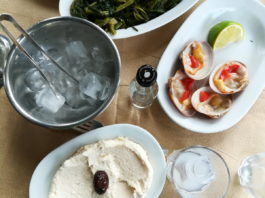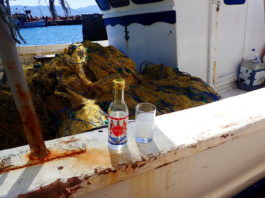For the uninitiated, ouzo teeters precariously between “classic” and “cliche.” The drink is not to blame- drunk properly, it’s a clean, fresh taste of summer. But, like many worthwhile pleasures, it needs a little finesse. Ouzo is heaven …eventually.
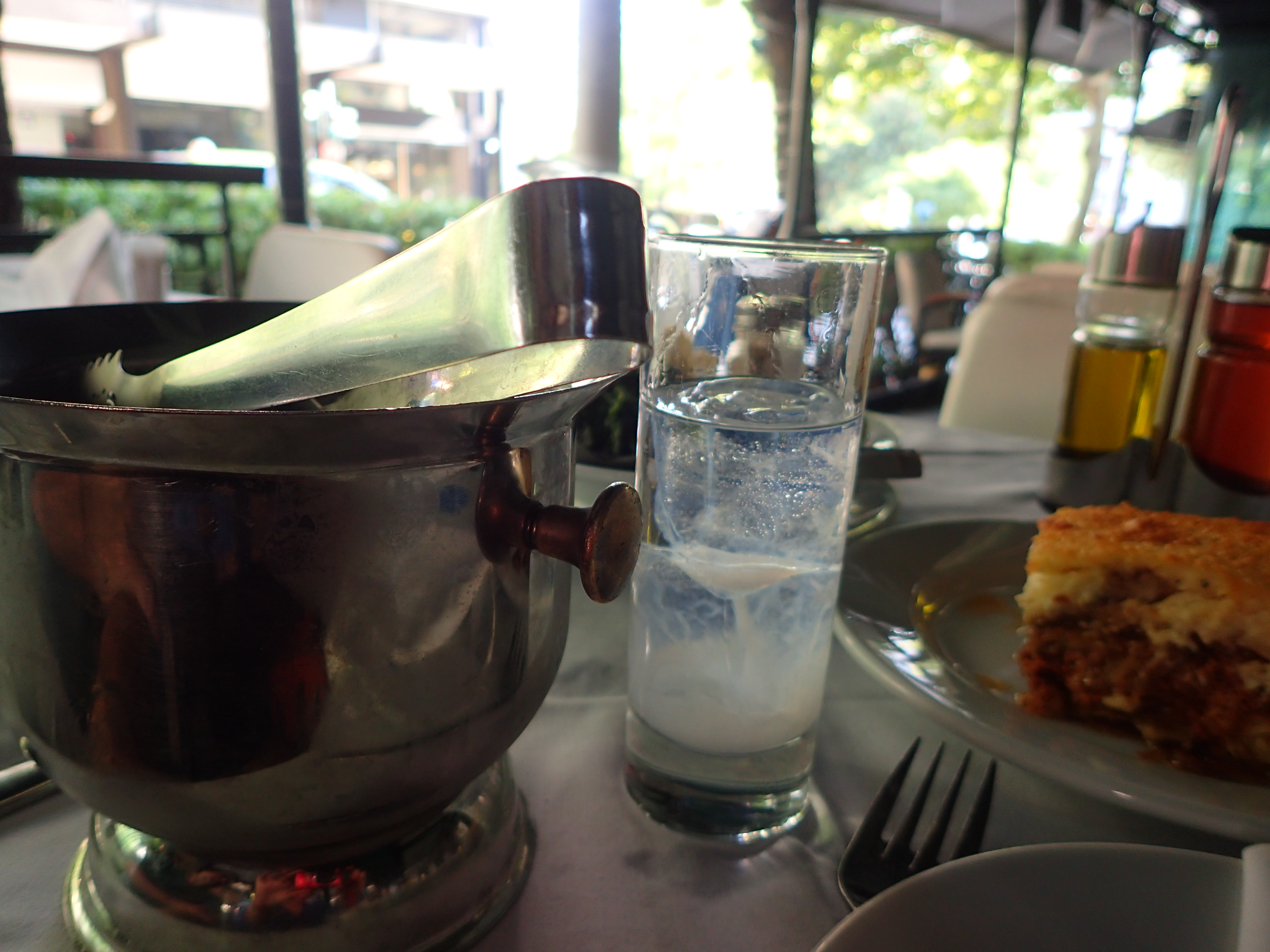
A Rough Start
Often, the things I ended up liking best in life, I at first didn’t really like at all.
If you saw My Big Fat Greek Wedding, you’ll remember the scene where that emphatically non-Mediterranean couple (the parents of the groom) drink a few straight shots of un-chilled ouzo that quickly set the room aspin. Of course, it can’t possibly help that people keep shouting “Opa!,” which is really disconcerting, and almost never happens in real life. With a heady anise and alcohol kick, a straight shot of ouzo shocks the palate, stuns the mind. And sadly, this is often its well-intended but unsubtle introduction abroad- a shot on the house, downed on the quick.
In truth, ouzo is all delicacy and finesse- diluted, importantly, not just with water, but also with ample leisure.
But anyway, without a rough start, the mystery of ouzo would not qualify as a secret. Who doesn’t like a drink with a little mystique?

Why Ouzo is the Perfect Drink
Ouzo lends itself particularly well to Greek drinking etiquette (Mastering the Art of Greek Drinking)), practices worth emulating- they emphasize the sociability of drink, its role in keeping people at the table, sharing philosophy and fish.
An authentic experience of ouzo is a revelation, almost an epiphany. The truth of things is that there is no subtler drink- imbued with grace and finesse, regulated by ritual and custom, beautiful and softly cloudy in its perfectly proportioned glass, enhancing every bite, adorning every word. You could drink this all afternoon or all night, which is good, because you just might: Greeks and their fortunate guests spend a long, long time at the table, and not just on weekends and special occasions.
This brings us to the first of ouzo’s virtues-
Flexible and Forgiving
Ouzo is usually diluted with water. You can strike a ratio that gives you just the faintest glow. This makes it possible to extend the hours of conviviality. It also ensures they have no unwanted effect, so they can be enjoyed as often as the occasion arises.
Lively
Wine can bring drowsiness. Ouzo doesn’t. Maybe it’s the bracing aroma, or the effects of distilled vs. fermented. But whatever the reasons, it keeps conversation flowing and tempers sweet.
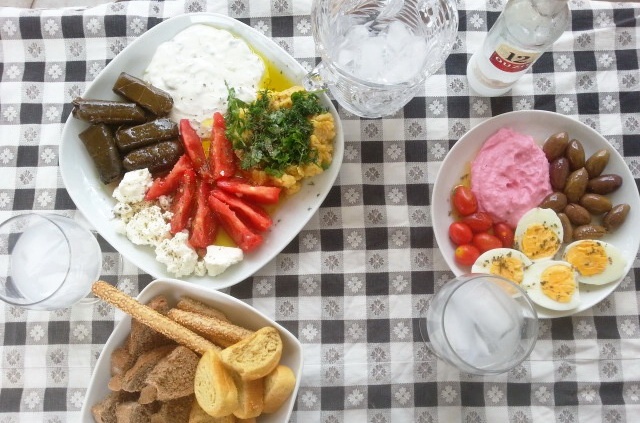
A Perfect Match
Meze- small plates of savory bites- make for a democratic table. There is no hierarchy of courses, no progression of wines- just a cycle of piquant bites, lively anecdotes, and refreshing sips. Popular meze are what is easily to hand- pantry items like cured and smoked fishes, olives, cheeses, maybe rounded out with some hot peppers or fresh squid fried up in a pan. Soft, sweetly fragrant anise is the ideal foil to the bold and briny flavors of the Greek palate. Anise is also considered a digestive- ouzo is a drink made for food.
How to Drink it:
Nearly all over Greece, a portion of ouzo is classically served in a tall glass- like a water glass or one a little smaller. It may be served on the rocks or neat with a bucket of ice, water on the side. At a classic “kafeneio” it will probably come with a little saucer of assorted bites, like a Spanish tapa. But usually we get a bottle. A 200 ml bottle is the cafe standard- the perfect amount for two people over the course of a little over an hour, a couple dishes shared between them.
A little ritual ensues. But what ritual depends on preference and geography. A few will drink their ouzo neat, water on the side. But most will dilute it. The alcohol is water soluble, but the aromatic compounds are not- these are what makes the glittering flakes and swirls of white as the ice cubes melt. Nearly everyone adds ice.
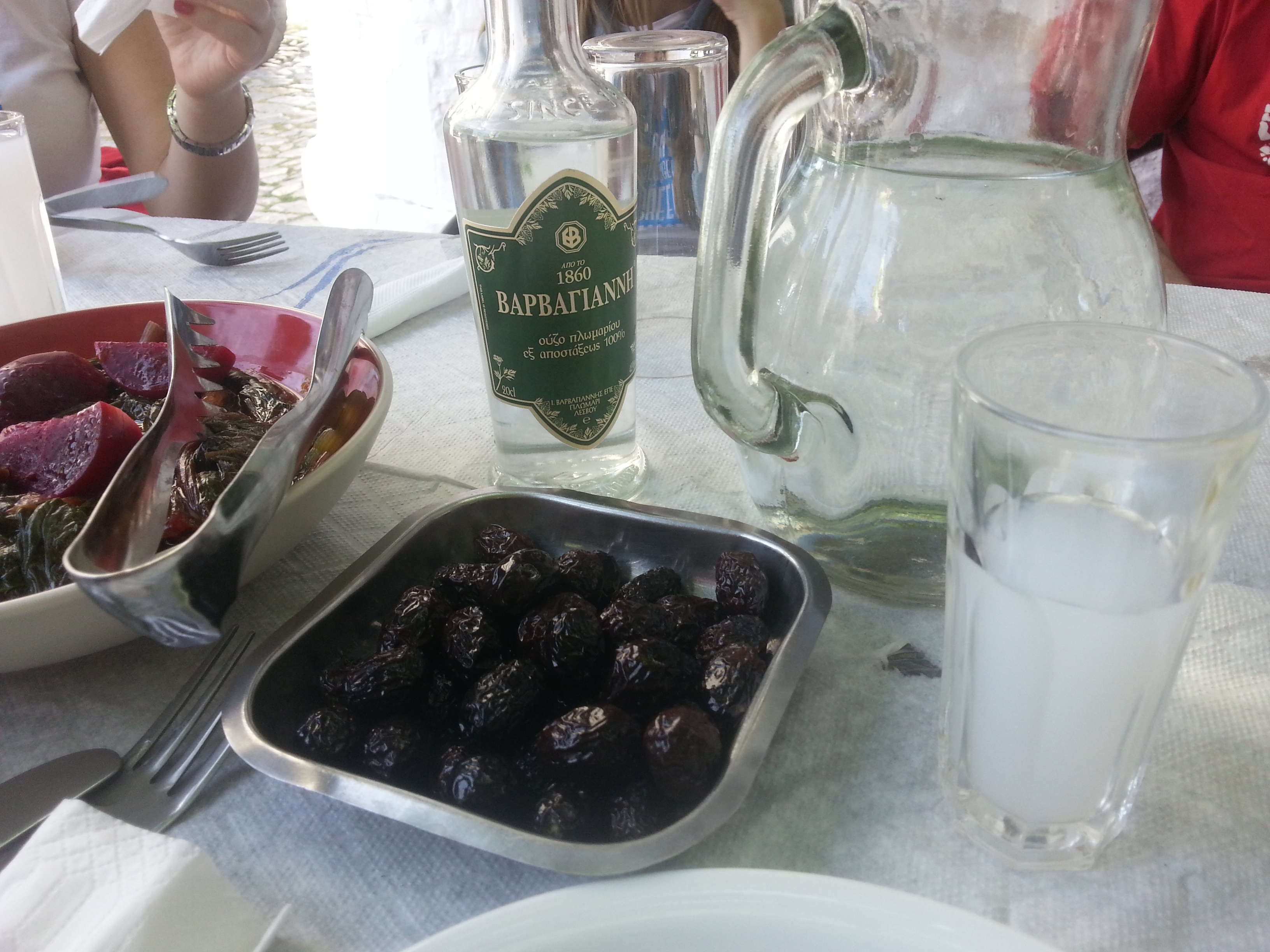
Drink like a local-
That is, nearly everyone but the people who know best. As they say in Lesvos:
“Πάμε για ενα ουζέλλη” (“Pame yia ena ouzelli” = Let’s go for a little ouzo)
Lots of the ouzo available all over comes from Lesvos and Chios. On Lesvos- an island with 56 varieties- ouzo is served with a pitcher of cold water on the side. No ice. Why no ice? Those glittering flakes are suspected of causing hangovers. Some also make a case for cooling it off gently and not “shocking” it. The glasses are also different- slightly shorter, and much narrower. They encourage graceful sips, frequently.
(Actually, once they did bring us a bucket of ice. We shrugged and looked at our host, Giorgos for an explanation. “?”. “They thought you might want it, because you’re foreigners.” “Foreigners like international foreigners?” He laughed “No, no, foreigners like not from Lesvos.”)
All the ritual of the Greek table is observed is observed in Lesvos, and every bit as much toasting, if not more. The only exception- when drinking wine or tsicoudia, we may top up the glass of our neighbor if it is running low. But with ouzo, diluted, everyone has his preferred blend. Topping up a glass will throw that out of whack- wait til your friend’s glass is empty to fill it again.
A year round plesure
I have come to think of this as a summer drink- wet bathing suits, fried calamari, hot summer nights at outdoor cafes. But Giorgos tells us it works nicely throughout the year. “On an island, work with agriculture and tourism fill the long days of summer. Ouzo “In the winter, there is less work, and the nights are long. Friends, music, and conversation over an ouzo- these fill the long nights of winter with joy.”
Our new favorite toast:
“Και εις άλλα με υγεία” (“Kai eis alla me ygeia”= “and to the next ones, in good health”)
